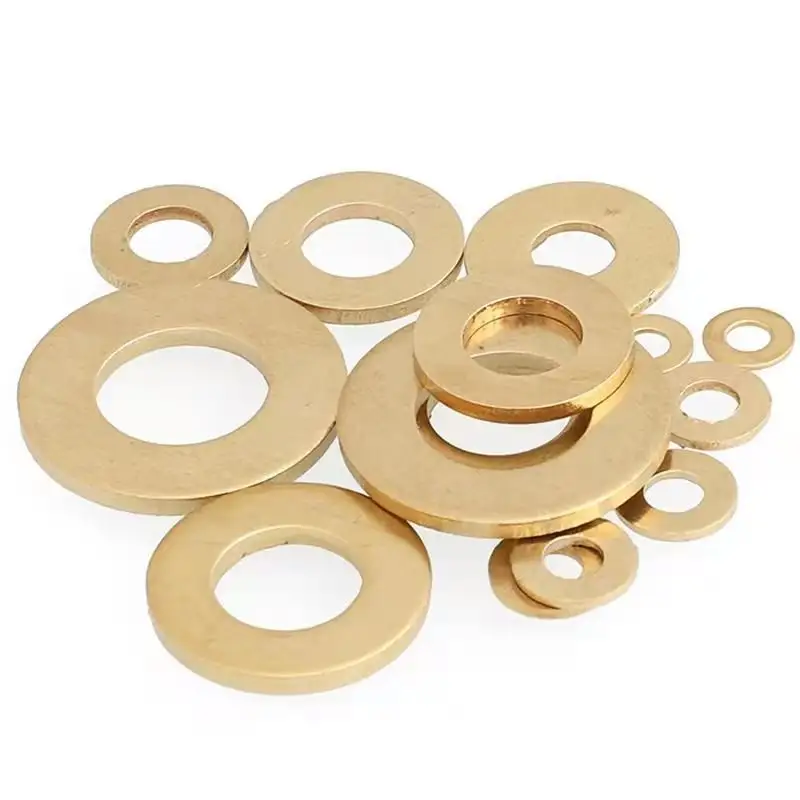
Copper and its alloys (like brass and bronze) are highly valued in machining for their excellent electrical/thermal conductivity,
corrosion resistance, and machinability (especially free-machining grades). However, successfully machining copper requires understanding its unique characteristics to avoid pitfalls and ensure safety. Here are key precautions:
1. Tool Selection & Wear:
-
Sharpness is Paramount: Copper’s softness and ductility cause it to readily adhere to cutting tools, leading to built-up edge (BUE). This blunts the tool, increases cutting forces, degrades surface finish, and can cause workpiece damage. Precaution: Use extremely sharp tools with polished rake faces. Carbide tools with sharp positive geometries are often preferred. Diamond-coated tools excel for high-volume or high-finish requirements.
-
Tool Material & Geometry: Choose grades resistant to adhesion. Positive rake angles reduce cutting forces and heat. Sharp cutting edges minimize material smearing.
-
Monitor Wear Aggressively: Inspect tools frequently. Replace at the first sign of significant flank wear or edge chipping to prevent poor quality and potential tool breakage.
2. Workholding & Setup:
-
Secure Clamping: Copper’s softness makes it prone to deformation under clamping pressure. Precaution: Use soft jaws (copper, aluminum, plastic inserts) or adequate support to distribute clamping force evenly and prevent marking or distorting the workpiece. Avoid excessive force.
-
Rigidity: Ensure the workpiece, fixture, and machine tool are rigid. Copper machining can generate vibrations if setups are loose, leading to chatter and poor surface finish.
3. Cutting Parameters & Chip Control:
-
Adequate Speeds & Feeds: Running too slow increases the risk of BUE formation and work hardening. Running too fast generates excessive heat, accelerating tool wear and potentially softening the workpiece. Precaution: Use manufacturer recommendations as a starting point. Generally, higher speeds and feeds than used for steel are suitable, but optimize for your specific alloy and operation. Maintain consistent feed rates; dwelling can cause work hardening.
-
Aggressive Chip Evacuation: Continuous, stringy chips are common with copper and can quickly become hazardous, wrapping around tools or workpieces, causing damage or injury. Precaution: Use chip breakers on tools whenever possible. Employ high-pressure coolant directed precisely at the cutting edge to break chips and flush them away efficiently. Ensure effective machine guarding to contain chips.
4. Cooling & Lubrication:
-
Essential for Heat & BUE: Effective cooling is critical to manage heat (preventing workpiece distortion and tool wear) and minimize BUE formation. Precaution: Use generous amounts of appropriate cutting fluid:
-
Soluble Oils or Semi-Synthetics: Common good general-purpose choices.
-
High-Pressure Coolant (HPC): Highly effective for chip breaking and evacuation in demanding operations.
-
Avoid Straight Oils: Can sometimes promote BUE on copper alloys. Ensure fluid is properly filtered to prevent recirculating fine copper particles that can scratch surfaces.
-
5. Surface Finish & Deformation:
-
Avoiding Smearing & Scratches: Soft copper can easily smear or get scratched by chips or handling. Precaution: Maintain sharp tools and proper coolant flow. Handle finished parts carefully, potentially using protective coatings or separators. Consider fine finishing passes.
-
Minimizing Burrs: Copper alloys can form burrs easily. Precaution: Use sharp tools with appropriate geometry. Consider deburring operations (mechanical, electrochemical, or manual) as a necessary step.
6. Material Specificity:
-
Know Your Alloy: Pure copper (C11000) is very gummy and difficult to machine. Free-machining brass (C36000) contains lead for chip breaking. Phosphor bronze is stronger but harder. Beryllium copper is very strong but requires specific safety precautions (dust control). Precaution: Adjust tools, speeds, feeds, and coolant based on the specific alloy being machined. Consult material datasheets.
Conclusion:
Successfully machining copper hinges on respecting its properties: combating built-up edge with sharp tools, managing softness and ductility through secure workholding and chip control, preventing heat issues with ample coolant, and always prioritizing safety, especially concerning sharp chips and dust. By diligently following these precautions, machinists can achieve high-quality copper components efficiently and safely. Always consult material-specific data and tooling manufacturer recommendations for optimal results.
